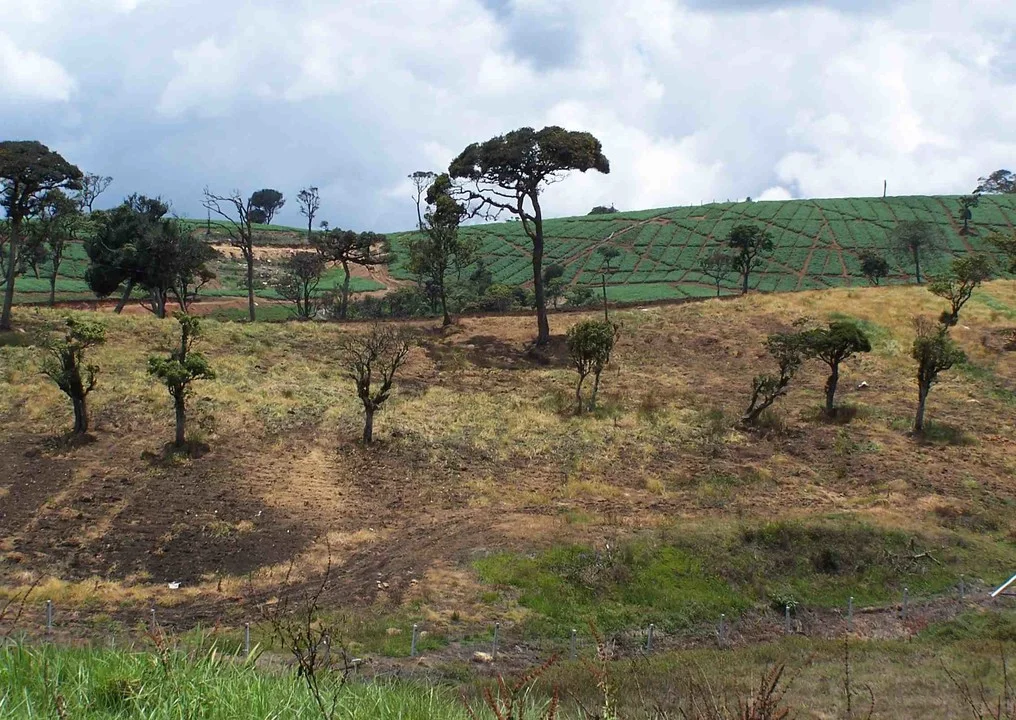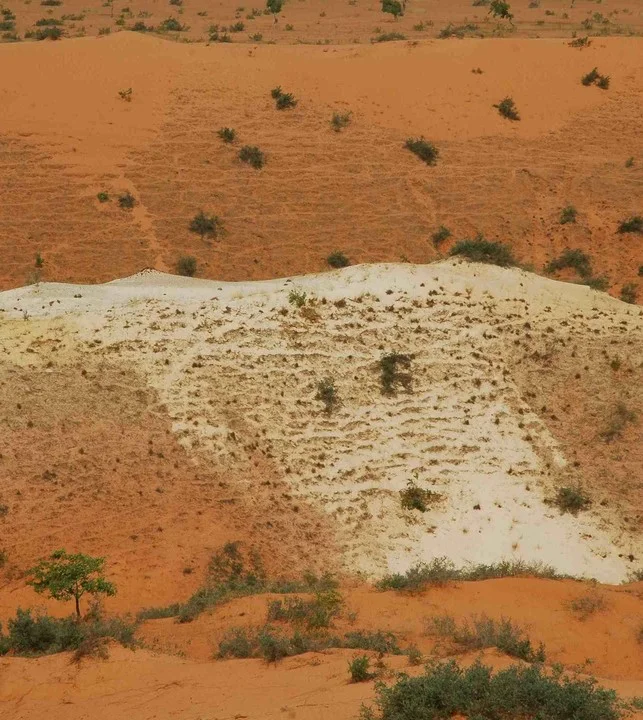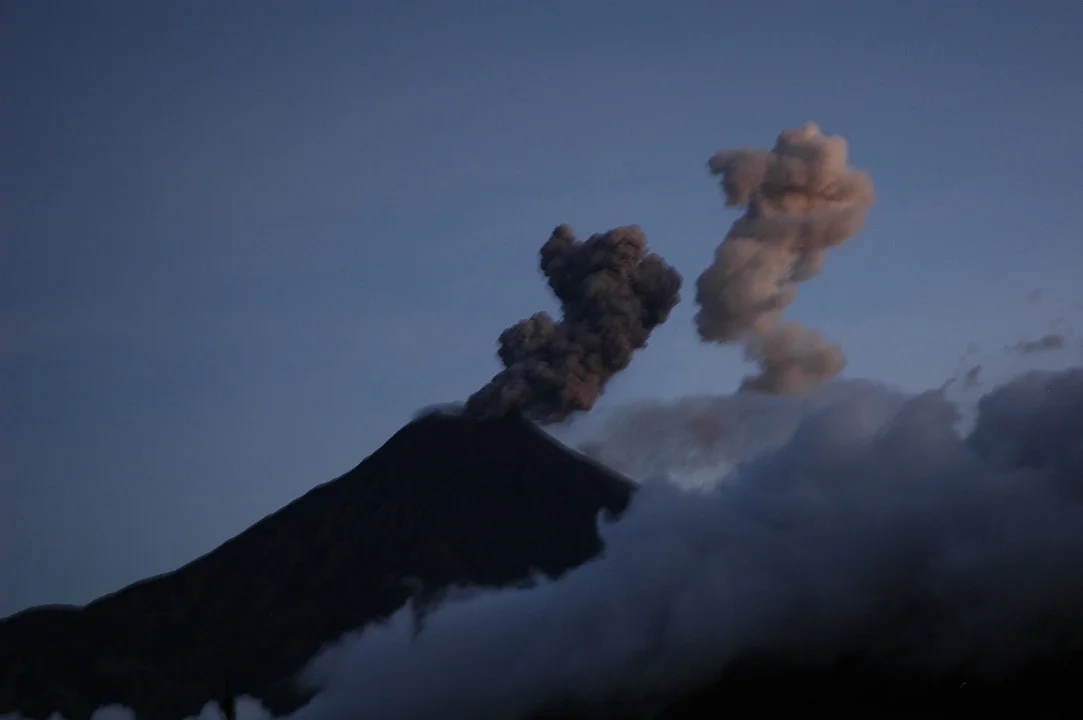The three basic substances of our biosphere, Air, Water and Soil share the characteristic that they are all dynamic and vary in quality and quantity from place to place on this planet. However there is what is generally recognized as the ‘optimal range’ of values for each one of these substances, to render the environment hospitable to life. While my comments today, are focussed on water, it should be kept in mind that they apply equally to the other two.
Water is a critical element of all living things and it is the medium through which much of life is expressed, all animals and plants including humans are made mostly of water. Water is an essential material for the maintenance of global ecosystems; it is required in the right quality and quantity for each purpose that it is used for. Water enters a landscape as rain or fog and moves across a landscape responding to gravity and heat. It flows both above and below the soil level in every terrestrial ecosystem increasing its load of suspended and dissolved solids, organic and inorganic compounds as it flows. The ability to clean groundwater is demonstrated by active soils, wetlands and by evapotranspiration, is a critical consideration not only for human sustainability but also for the sustainability of our life support systems. As such, a visioning process that seeks to address all aspects of water and harmonizes this vision with the existing international agreements is critical.
In the examination of the role, function and value of water, an obligatory needs of water management to address the goals of agreements such as the Convention on Biological Diversity (CBD), The Commission on Sustainable Development (CBD), The Convention to Combat Desertification (CCD) and the Millennium Development Goals (MDG), becomes obvious. Thus one statement that might provide an intergrative vision is; “The requirement for developing optimally functioning watersheds at the local, regional and global levels is a fundamental development goal”.
From the local level on, management must be focussed on the watershed, it can begin as a mini watershed of a brook and the scale or treatment area widened into the watershed of a stream or of a river basin.
A basic need for all humans is the ability to have access to clean water and air. For this country the question clean air is still largely an urban problem, however, the question of clean water is much more ubiquitous and ominous.
Sri Lanka is rapidly moving towards a situation where the traditional knowledge of basic health care and the stability of climate buffers are becoming dangerously eroded. The surface waters of the country are demonstrating a rapid decline in quality.
The estimated groundwater potential of the country is 780,000-hectare meters per annum. (Natural Resources of Sri Lanka, 1991). Rainfall is the primary source of groundwater. Its contribution to the groundwater recharge is estimated to be 7-30% (Anon 2000), or 200 – 600 mm/year. The majority of Sri Lankans rely on surface water or shallow aquifers for their supply of drinking water. However the quality of this resource is being rapidly eroded. The water sources from the very tops of the mountains are being contaminated with large volumes of toxins and leached nutrients. This is the consequence of a socially irresponsible vision of agriculture that accepts no responsibility beyond production goals. One consequence of this view and practice of agriculture is that toxic chemicals are often applied at rates exceeding eighty times the manufacturers recommended dose. While the slow poisoning of the population through its food intake is an item that needs urgent address, the poisoning of the headwaters of our rivers bespeaks of an incredible lethargy in the monitoring of water quality by the administration.
The high loads of nutrient dumped into the river systems by wasteful applications of fertilizer, a consequence of a poorly informed agricultural sector, are rendering rivers eutrophic, full of algae and silt. The problem is compounded by the high loads of garbage and sewage dumped into the river systems by riverside towns, communities and industries that contribute towards creating algal and bacterial blooms of unprecedented magnitude. A season of low flow and drought can now render many of these waters toxic. Further, the contamination of the shallow aquifer by industrial chemicals, currently tapped by a majority of domestic wells, has now become a common phenomenon in most industrial areas. The complaints from the public over polluted wells are yet to be attended to. This trend if allowed to continue will impact not only the present population but will also compromise the health and security of future generations of Sri Lankans.
It is in this context that we should examine and comment on the draft framework for a National Water Resources Policy (De Alwis 2011). While it is a good start, more public participation and comment is obviously a good thing . It suggests a framework on a base of 18 principles :
1. All citizens of Sri Lanka are entitled to have access to water for preservation of life as a basic human right.
2. All water resources, excluding rainwater, belong to the people, but may be held and managed in trust for them by local and national bodies elected by them.
3. Rainwater is considered part of the land on which it falls and will belong to the person or institution owning or having legal rights to use of the land.
4. In situations of limited supply, traditionally accepted water use rights for drinking and sanitation will take precedence over all other claims on the resource. Maintenance of livelihoods will be next in the order of precedence.
5. The unit for planning the development and management of water resources will be the stream or river basin.
6. Where basins are spread across local government boundaries, their utilization and management would be the responsibility of next higher level government concerned. Trans-basin and multi-basin development and utilization of water resources would be managed by authorities set up for the purpose.
7. Government or Community organizations would be responsible for the distribution of water to users. This responsibility may be contracted out to private organizations where the government or community organization concerned deems it appropriate.
8. Water rights will be recognized, with regulations governing allocations in line with national priorities.
9. In order to ensure the sustainability of publicly funded water development projects, whether for domestic use, irrigation or commercial purposes, responsibility for the maintenance of the systems would ultimately be handed over to the water users. In the case of large water development projects, the government would support the formation of user organizations for this purpose.
10. The development of water resources would take economic, social and environmental sustainability into account.
11. The responsibility for maintaining the quality of a water resource, according to the uses to which it is put, should rest with the users either individually or collectively as the case may be. External polluters of water sources shall be liable under the law to appropriate penalties.
12. Groundwater extraction and pollution will be monitored and appropriately regulated through the relevant institutions in groundwater sensitive areas.
13. Management of water resources will be devolved or decentralized as provided in prevailing Constitutional provisions.
14. Water resources should be shared among the demands of major competing uses including domestic use, irrigation and drainage for agriculture, animal husbandry, fishery, aquaculture, biodiversity maintenance, power generation, industry, tourism and construction in a balanced and integrated manner.
15. Where there are competing demands for limited water resources, the quantity of water available after satisfying the demand for domestic supplies and livelihood maintenance would be allocated on the basis of national priorities and economic rather than financial returns.
16. In situations of water scarcity, fiscal, and if necessary legal, punitive measures would be taken to prevent wastage, pollution and luxury consumption of water.
17. All developers of water resources including state agencies will need to obtain the approval of the National Water Resources Authority (NWRA) which would be set up to regulate the development and use of water resources. There will be incentive schemes for the improvement of water quality and quantity increase and disincentive schemes for the reduction of water quality and quantity.
18. The State will actively promote the integration of gender and public health concerns in policies, plans and programmes in water sector activities
I have contributed a few minor edits to the above in italics, in an endeavour to strengthen such a national dialogue, The most significant addition being that ‘There will be incentive schemes for the improvement of water quality and quantity increase and disincentive schemes for the reduction of water quality and quantity’. The idea being that good water management within a watershed must be seen as an environmental service and have economic recognition. Many countries are adopting such water responsible schemes as an integral part of water management. For instance, in Honduras, the management of the Rio (river) Mocal watershed with an agriculture that mimicked their forests, restored the water holding capacity of the montane ecosystems and increased the dry weather flow by 100 percent in ten years. Promotion of such activities must become a lynchpin on any national policy on water.
We have been conscious of the value of our forested hills for a long time. The role of our forests in maintaining water quality and quantity was perceived well by the Hon.D.S.Senanayake who states
“ In the days of the Sinhalese Kings when the mountainous regions were forest-clad (they) absorbed and retained a considerable proportion of the rainfall. The denudation of the high hills that foreign capital enterprise has brought about has admittedly tended to reduce the fair-weather flow streams and to remove a useful source of replenishment. The fact that Forests have an intimate relationship to water supplies, have largely been ignored in modern planning. Wadsworth commenting on Forests and Water states “The delayed release of rainwater from forested soils of the uplands are vital to lowland water supplies. Litter that accumulates on the forest floor absorbs the physical impact of torrential downpours and releases the water gently to the mineral soil beneath. This cushioning action largely prevents the water from suspending large quantities of surface soil particles and thus clogging soil pores beneath. In addition, the decaying litter enriches the water entering the soil and supports organisms that produce porous upper soil layers. These processes are the most obvious ways forests enhance water supplies. The draft on soil water is greatest under forests with their deep-rooted trees and high rates of transpiration. Between storms porous soils again become highly receptive to new water.”
This view of forests and their relationship to water was hi-jacked by monoculture plantations of timber or crop trees being promoted as ‘forests’. Further, global forestry investment was directed by such ‘foresters’ who saw trees as forests, ignoring the fact that trees only constitute one percent of a forests biodiversity, they have created plantations that have nothing in common with forests in either biodiversity or environmental services. Thus a good national policy on water must address, critical landscape needs of water as well as both quality and quantity.
The loss of forests also contributes greatly to the water cleaning functions of any nation. The quantity of water released annually by forests are like aerial rivers cycling about 6250 billion tons of water into the atmosphere per annum. This quantity of evaporative water not only greatly influences local cooling events, but also contributes to the distribution of heat in the atmosphere. One of the most significant consequences of evapotranspiration by terrestrial vegetation is the ʻcleaningʼ effect on groundwater, releasing polluted ground water freed of the chemical pollutants that it was once burdened with. This cleaning function is hardly recognized nor evaluated.







